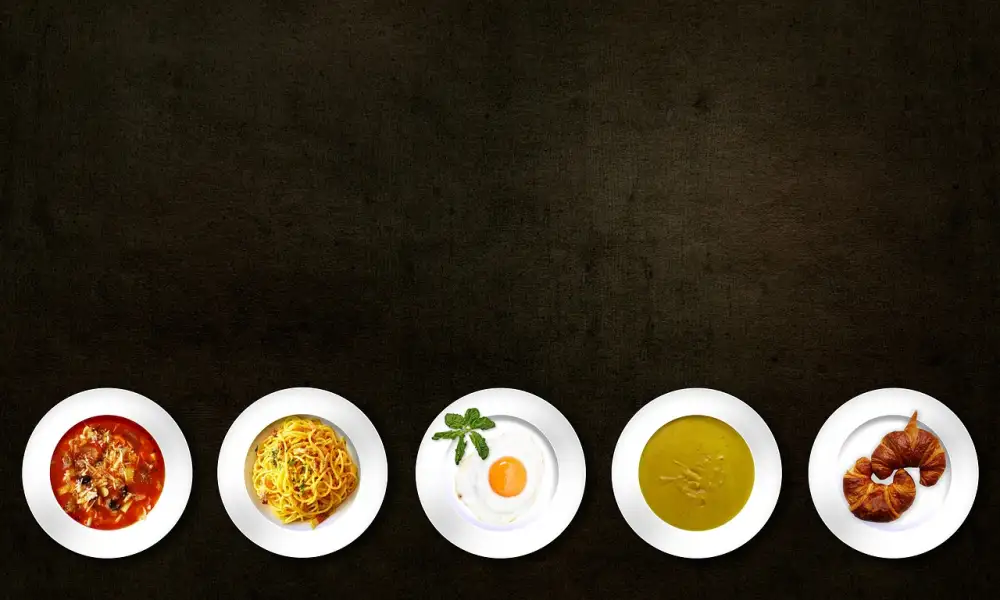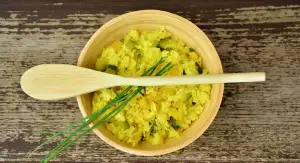Cacio e Pepe: The Authentic Italian Pasta Dish with Cheese and Pepper - A Must-Try Recipe!

- History and Origins of Cacio e Pepe
- Ingredients Required for Cacio e Pepe
- Step-by-Step Instructions to Make Cacio e Pepe
- Tips and Tricks for Perfecting Cacio e Pepe
- Variations and Additions to Cacio e Pepe
- Serving Suggestions and Pairings for Cacio e Pepe
- Frequently Asked Questions about Cacio e Pepe
Cacio e Pepe is a classic Italian pasta dish that has gained popularity worldwide for its simplicity and bold flavors. Translating to "cheese and pepper" in English, this dish showcases the beauty of just a few ingredients coming together to create a truly satisfying meal. With its roots deeply embedded in Roman cuisine, Cacio e Pepe has stood the test of time and continues to be a beloved staple in Italian households. Whether you're a seasoned cook or a beginner in the kitchen, this authentic recipe is a must-try for any pasta lover looking to experience true Italian flavors.
History and Origins of Cacio e Pepe
Cacio e Pepe, which translates to "cheese and pepper" in Italian, is a classic pasta dish that has its roots in the region of Lazio, Italy. This simple yet flavorful dish has been enjoyed for centuries and is considered a staple of Roman cuisine.
The origins of Cacio e Pepe can be traced back to the days when shepherds roamed the hills of central Italy. With limited ingredients available, they relied on basic staples like pasta, cheese, and black pepper to create hearty meals. It is believed that Cacio e Pepe was born out of necessity during this time.
Over the years, Cacio e Pepe has evolved into a beloved dish that showcases the true essence of Italian cooking. Its popularity has spread beyond Rome and can now be found on menus around the world. Despite its simplicity, mastering the art of making authentic Cacio e Pepe requires skill and precision.
Today, Cacio e Pepe continues to be cherished for its rich flavors and creamy texture. It serves as a testament to the ingenuity of Italian cuisine and remains a timeless favorite among pasta lovers everywhere.
Ingredients Required for Cacio e Pepe
To make the authentic Cacio e Pepe, you will need just a few simple ingredients. The star of the dish is the pasta itself, preferably spaghetti or bucatini. You will also need Pecorino Romano cheese, which is a hard and salty sheep's milk cheese from Italy. Freshly ground black pepper is essential for that signature peppery kick. Lastly, you will need some pasta cooking water, which helps create a creamy sauce when combined with the cheese and pepper. With these basic ingredients, you can create a delicious and satisfying Cacio e Pepe at home.
Step-by-Step Instructions to Make Cacio e Pepe
1. Boil a pot of salted water and cook the pasta until al dente. Reserve some pasta water before draining.
2. In a large skillet, melt butter over medium heat. Add freshly ground black pepper and toast for a minute until fragrant.
3. Gradually whisk in grated Pecorino Romano cheese, adding pasta water as needed to create a creamy sauce.
4. Add the cooked pasta to the skillet and toss well to coat it evenly with the sauce.
5. Cook for an additional minute, stirring constantly, until the cheese has melted completely and coats the pasta beautifully.
6. Remove from heat and let it rest for a minute to allow the flavors to meld together.
7. Serve immediately, garnished with additional grated cheese and a sprinkle of freshly cracked black pepper.
Enjoy this simple yet incredibly flavorful dish that showcases the beauty of Italian cuisine!
Tips and Tricks for Perfecting Cacio e Pepe
1. Use high-quality ingredients: Since Cacio e Pepe is a simple dish, the quality of the ingredients really matters. Opt for freshly grated Pecorino Romano cheese and coarsely ground black pepper for the best flavor.
2. Cook pasta al dente: It's crucial to cook the pasta until it is al dente, meaning it still has a slight bite to it. This ensures that the pasta will absorb the sauce properly and not become mushy.
3. Reserve pasta water: Before draining the cooked pasta, save some of the starchy cooking water. This water can be used to adjust the consistency of the sauce if needed. The starchy water helps bind the cheese and pepper together.
4. Toss quickly off heat: Once you add the cheese and pepper mixture to the drained pasta, toss everything quickly off heat. This prevents the cheese from clumping or becoming too sticky.
5. Add cheese gradually: To avoid clumps of cheese in your sauce, add it gradually while tossing continuously. This allows each addition of cheese to melt evenly into a smooth sauce.
6. Adjust seasoning carefully: Taste your Cacio e Pepe before adding any extra salt or pepper since Pecorino Romano is naturally salty. If needed, season with a pinch of salt or sprinkle more black pepper according to your preference.
By following these tips, you'll be able to create a perfect plate of Cacio e Pepe that showcases its simplicity and deliciousness!
Variations and Additions to Cacio e Pepe
While the traditional recipe for Cacio e Pepe calls for only three main ingredients - pasta, Pecorino Romano cheese, and black pepper - there are several variations and additions that can be made to enhance the flavor of this classic dish.
One popular variation is to add a touch of garlic to the sauce. Simply sauté a clove of minced garlic in olive oil before adding the cooked pasta and cheese mixture. This adds a subtle depth of flavor that complements the sharpness of the Pecorino Romano.
Another option is to incorporate some vegetables into the dish. Sautéed mushrooms or roasted cherry tomatoes can add an earthy or sweet element, respectively, to balance out the richness of the cheese and pepper.
For those who enjoy a bit of heat, adding red pepper flakes or chili flakes can give Cacio e Pepe a spicy kick. Just be sure to adjust the amount according to your preference.
Additionally, some chefs like to experiment with different types of cheese. While Pecorino Romano is traditional, you can try using Parmesan or Grana Padano for a slightly milder flavor. Mixing different cheeses together can also create interesting taste profiles.
Lastly, some creative cooks have even incorporated protein into their Cacio e Pepe by adding crispy pancetta or bacon bits. This adds a salty and smoky element that pairs well with the cheese and pepper.
Remember, while these variations can be exciting to explore, it's important not to stray too far from the essence of Cacio e Pepe. The simplicity and harmony of flavors are what make this dish truly authentic and delicious.
Serving Suggestions and Pairings for Cacio e Pepe
When it comes to serving suggestions and pairings for Cacio e Pepe, simplicity is key. This classic Italian dish shines on its own, so it's best to keep the accompaniments minimal. Serve it as a main course with a side of fresh salad or steamed vegetables to add some freshness and balance to the rich flavors of the pasta. Pair it with a crisp white wine like Pinot Grigio or Sauvignon Blanc, or even a light-bodied red like Chianti. The sharpness of the cheese and the heat from the pepper will complement these wines perfectly. Remember, Cacio e Pepe is all about highlighting the star ingredients, so let them take center stage!
Frequently Asked Questions about Cacio e Pepe
1. Is Cacio e Pepe difficult to make?
No, Cacio e Pepe is a simple dish that requires only a few ingredients and basic cooking techniques.
2. Can I use any type of pasta for Cacio e Pepe?
Traditionally, spaghetti or tonnarelli are used for Cacio e Pepe, but you can experiment with other types of pasta as well.
3. Can I use pre-grated cheese for Cacio e Pepe?
It is recommended to use freshly grated Pecorino Romano cheese for the best flavor and texture.
4. How can I prevent the sauce from becoming clumpy?
To avoid clumping, it's important to gradually add the cheese and pepper mixture to the cooked pasta while tossing continuously.
5. Can I add other ingredients to Cacio e Pepe?
While traditional Cacio e Pepe only includes cheese, pepper, and pasta, you can add ingredients like bacon or mushrooms for added flavor.
6. Is it necessary to use a specific type of pepper for Cacio e Pepe?
Freshly ground black pepper is typically used in this dish, but you can also experiment with different types of peppercorns for a unique twist.
7. Can I make a vegetarian version of Cacio e Pepe?
Yes, you can substitute the Pecorino Romano cheese with a vegetarian-friendly alternative like Parmesan or Grana Padano.
8. How should I store leftover Cacio e Pepe?
Leftover Cacio e Pepe can be stored in an airtight container in the refrigerator for up to 2 days. Reheat gently on low heat while adding a splash of water or olive oil if needed.
Remember that practice makes perfect when it comes to mastering this classic Italian dish!
In conclusion, Cacio e Pepe is a timeless Italian pasta dish that showcases the simplicity and elegance of authentic Italian cuisine. With just a few ingredients, this dish can be transformed into a flavorful and comforting meal that will satisfy any pasta lover. The combination of cheese and pepper creates a unique and delicious flavor profile that is both rich and spicy. Whether you're a beginner in the kitchen or an experienced cook, Cacio e Pepe is a must-try recipe that will impress your family and friends. So grab your apron, gather the ingredients, and get ready to indulge in this classic Italian dish. Buon appetito!
Published: 18. 11. 2023
Category: Recipes



